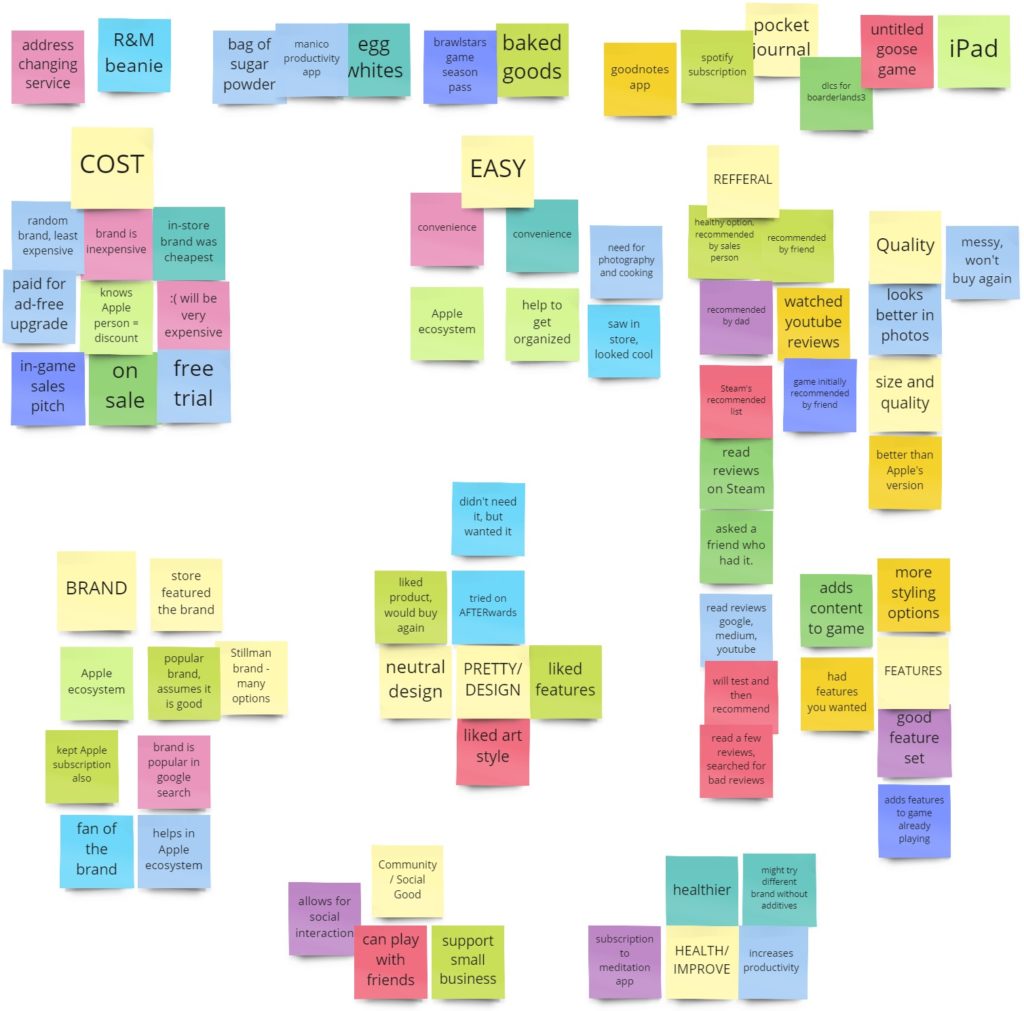We focused on customers as individuals rather than as a market segment. We used our own recent purchasing experiences to talk about Awareness, Evaluation, Purchase and Activation, Delivery and After Sales and Retention.
We started with in-class research about reasons we bought things, and the sorted into a few emergent categories. The resulting Miro board:

Here’s the Powerpoint used in class: Class-06-S21-customers.
Our own experiences helped us understand the phases of customer relationships and channels.
- Awareness – Startups do well to start with a very targeted or niche audience that they can reach out to directly. We talked about facebook, PDI and a few others.
- Evaluation – Customers want to try out the product. It helps them reduce risk and feel comfortable with the decision. It is an important way for customers to compare products (or solutions to their problems). Evaluation of new products from new companies is especially hard. Demos, samples, trailers and word of mouth recommendations are valuable tools. Many products build evaluation into their model (free-to-play and “first month free” are examples).
- Purchase – Shopping carts (real and virtual) get abandoned when it’s hard to pay. Make it easy for customers to give you their money!
- Delivery – Plenty of opportunities to make a big impression on your customer, and potentially get new customers. We talked about packaging and unboxing, and how delivery is the whole product for some markets (like theme parks and movie theaters).
- After Sales – Companies want to build a long term relationship with their customers. Even if they only sell you their product once, they want you to refer their product to others.
Homework for Tuesday, March 2nd.
Presentations about your customers
- 7 Minutes
- Results from customer research
- Talk to potential customers for your product. Some tips:
- Evaluate how interested they would be in your product. Pay particular attention to suggestions they may have of how to improve it. Include that information in your presentation.
- How much would they be willing to pay for it? You may have to be clever to figure out the answer to this. For example, you may want to ask what they’ve paid for similar items and if they think this is worth the same amount.
- Talk to potential customers for your product. Some tips:
- Present your customer plan
- Who is your customer?
- Awareness, Evaluation, Purchase and Activation, Delivery, After Sales: what would you do in each of these areas?